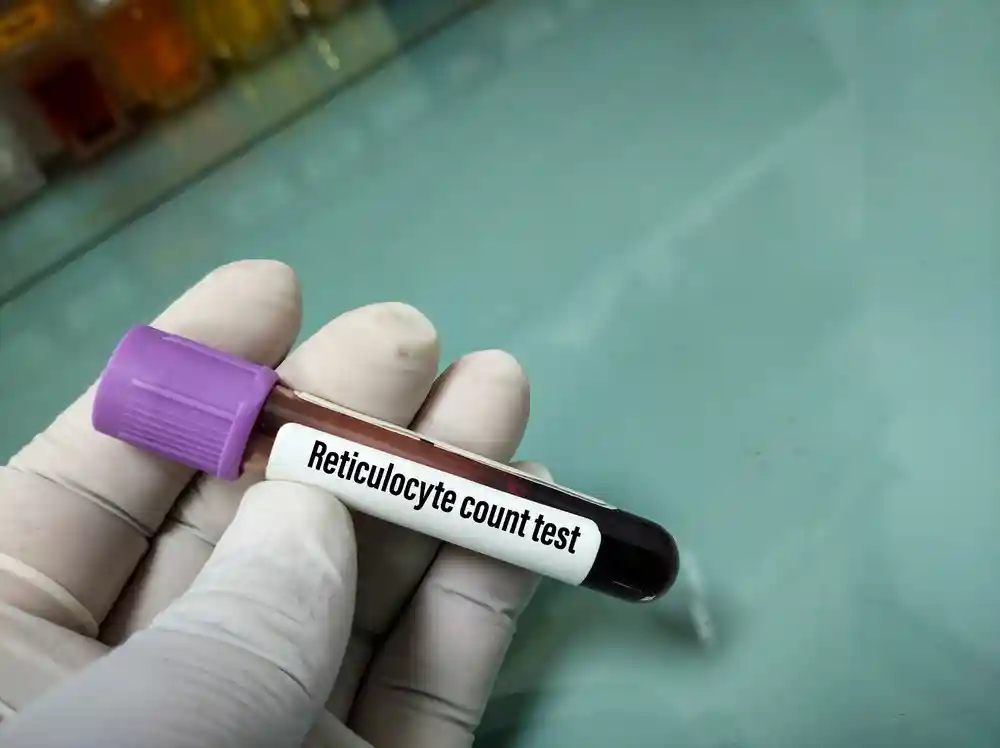Reticulocyte count

Red cells pass by different stages before being released into the circulation, the last of which is called reticulocytes. Reticulocytes mature in 24-48 hours in the bone marrow and are then released as mature red cells. This controls the level of reticulocytes at 0.5-2% of all red corpuscles. They are detected using automated cell counters with the help of special fluorescent dyes and laser techniques to differentiate them from mature red cells. They are also stained with a special methylene blue stain to be visualized under the microscope. What is peculiar, however, is that red cells become smaller when they mature which means that if the reticulocyte count is high, larger cells will be found in the circulation and the MCV tends to be high.
Causes of elevated reticulocyte count include conditions which cause the destruction or loss of red cells at a rate higher than what the bone marrow can replace. It is usually seen in hemolytic anemias -anemias where red cells are destroyed by the effect of antibodies or toxic materials in the blood stream-, in cases of chronic yet slow loss of blood and following an attack of acute loss of blood. Reticulocyte count is, however, a marker of a healthy active bone marrow which responds to anemia. If reticulocyte count fails to rise in response to anemia it can indicate one or more of the following:
- Bone marrow failure following chemotherapy or cancer.
- Uncorrected iron deficiency anemia.
- Vitamin B12 or folate deficiency.
- Decreased levels of erythropoietin, a hormone secreted by the kidney which is decreased in cases of renal failure. It plays a vital role in stimulating the bone marrow to produce red blood corpuscles.
